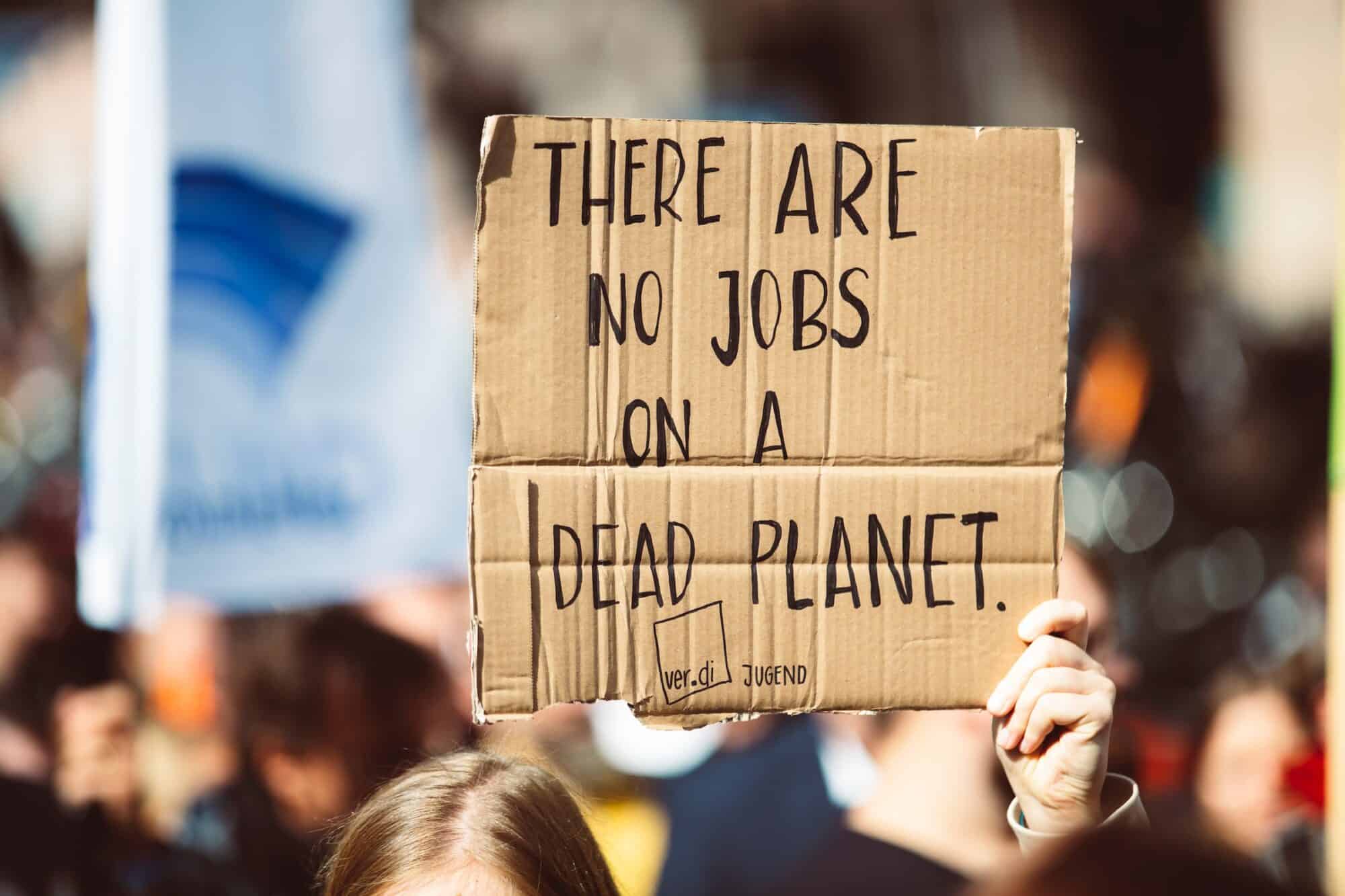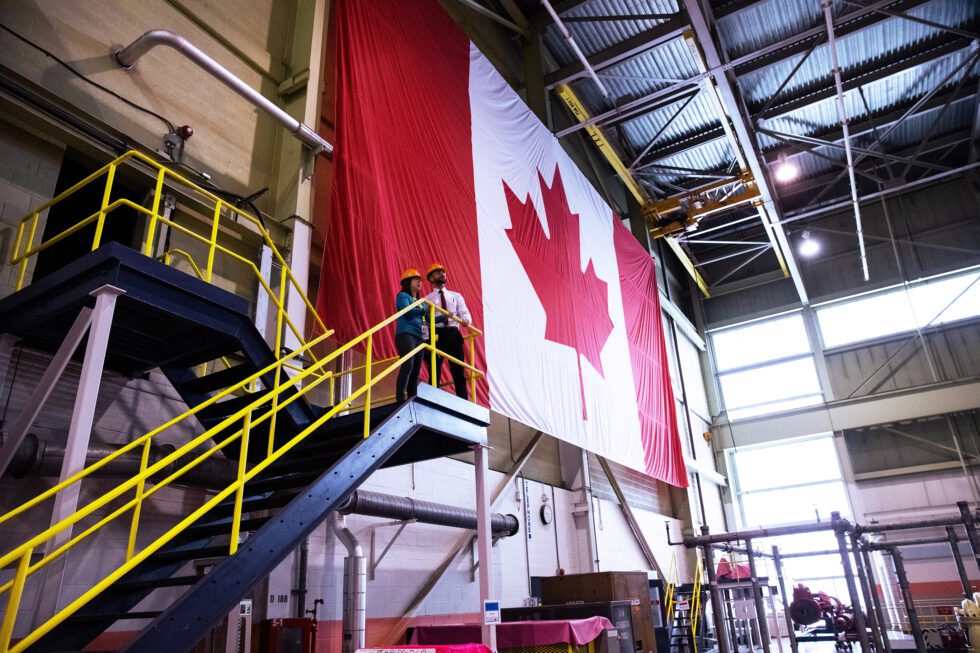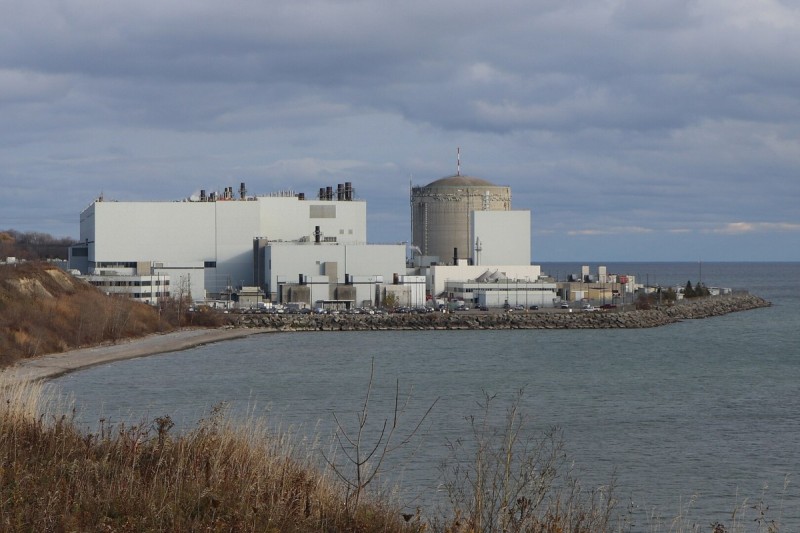Many Canadians have, with good reason, embraced the idea of a Green New Deal. Supporters of the idea rightly say that dealing with the global climate crisis cannot be separated from the pursuit of social and economic justice. They emphasize that, with strong government leadership, a rapid transition away from the old carbon economy can generate many good new jobs in areas like renewable energy and energy conservation such that no workers need be left behind.
It is true that transition to a clean, green economy will create many new jobs to replace the relatively small number of direct jobs which exist in the fossil fuel industries such as coal and oil and gas extraction. Indeed, clean energy sectors are generally more labour intensive, and building a new, non carbon economy will require massive job-creating new public and private investments in wind farms and solar installations; in new infrastructure, from power grids and energy storage to public transit and rail; in shifting to far more energy efficient buildings, transportation modes and industrial operations; and in the conversion of entire industries, like the auto sector, to new products such as zero emission vehicles.
That said, a Green New Deal will have to go hand in hand with a much stronger government role in the economy in the form of industrial and community development policy so as to offset traditional Canadian weaknesses in advanced manufacturing and in some related professional services. We have failed to fully capitalize on the job creation potential of the needed transition.
Clean Energy Canada says that the clean economy covers energy generation from zero carbon emission sources (including hydro and nuclear power) and related manufacturing and construction activities; energy efficiency and emissions reduction activities such as shifting to green buildings; and zero emission transportation such as electric vehicles and infrastructure. By this definition, the sector contributed $56.3 Billion to GDP in 2017 and accounted for 298,000 jobs or 2% of all jobs in Canada, and has been growing at a faster pace than the economy as a whole.
While there are many small Canadian-based industrial innovators and exciting new start-ups in the clean economy, the fact remains that the sector is small and that the Canadian share of the domestic market for needed manufacturing inputs in particular is low. Overall, we run a huge deficit in trade of mechanical and electrical machinery and equipment of $85.5 billion, as exports of $62.0 billion are far greatly outweighed by imports of $147.5 billion. (2018 Industry Canada trade data.)
A recent United States government report finds that the total Canadian market for power generation and renewable energy equipment and materials is $17.3 billion per year, of which imports from the US amount to more than one half ($9.9 billion.) We are seen as an important and growing market for United States companies.
The Canadian Clean Technology Industry Report 2017 reports that the Canadian share of global exports of manufactured environmental goods is minuscule and falling, from 1.6% in 2008 to 1.4% in 2015.
Despite the rapid growth of wind power installations and capacity, the wind turbine manufacturing industry in Canada is small and declining. It accounts for just 1805 jobs and has been shrinking rapidly in recent years with the end of domestic procurement preferences in Ontario.
The Clean Technology Industry Report finds that “ our detailed analysis of the industry finds much reason for concern today and into the medium term. In short, Canada’s clean-technology industry is awash in red ink. Its firms, and the know-how and intellectual property (IP) they hold, are vulnerable to foreign takeovers. Despite unprecedented interest and engagement from provincial and federal governments, Canada’s low-carbon Renaissance is very much on the ropes. The sector needs smart new policy from the public sector and engagement from Bay Street to build markets for low-carbon solutions, unlock private finance, and secure the prosperity that should accrue from investment in low-carbon innovation.”
To their credit, the New Democratic Party has made a clear link between climate change policy and industrial strategy, saying that we need to increase domestic content, especially in the manufacturing sector, while significantly growing the domestic market for an advanced low carbon manufacturing economy. They talk about major new investments in zero emission vehicles, public transit and high frequency rail “choosing Made in Canada wherever possible.”
The plan proposes to establish “a new Canadian climate bank … to boost investment in renewable energy energy efficiency and low carbon technology ,,, (It) will also support made in Canada manufacturing of renewable energy components and help scale up Canada’s clean energy industry.” (p53)
One significant obstacle to a national industrial strategy for the clean economy is the limits set out in investment and trade agreements, such as the World Trade Organization (WTO) Government Procurement Agreement or GPA which prohibits or limits national content requirements in direct procurement by the federal and provincial governments except on small projects. Trade deals with the European Union and the Trans Pacific Partnership are even more restrictive.
The WTO ruled in 2013 that the Ontario Green Energy Act, which gave generous contract terms to renewable energy suppliers manufacturing in Ontario, was discriminatory. Much of the industrial capacity created as a result has subsequently closed.
GPA rules, which apply to Canada-US trade, are not necessarily fixed in stone and are patently unfair given that the United States retains many Buy America rules in government procurement. Also, the proposed Canadian climate bank could be given a dual mandate to promote national industrial development as one key criterion for investment decisions, as is now the case with the caisse de depot in Quebec, so long as it is not covered by the GPA.
Further, municipalities are not covered by the GPA, and all governments retain the right to provide subsidies to Canadian-based enterprises for purposes of regional and local development. There is thus some room in which to move, even though most local and provincial governments as well as the federal government have been very reluctant to give an explicit and real preference to Canadian owned and located suppliers of goods and services.
A Green New Deal in Canada will be a much more powerful tool for good job creation if twinned to an industrial strategy. But this will require a government prepared to push the limits and challenge the current rules of the game.





